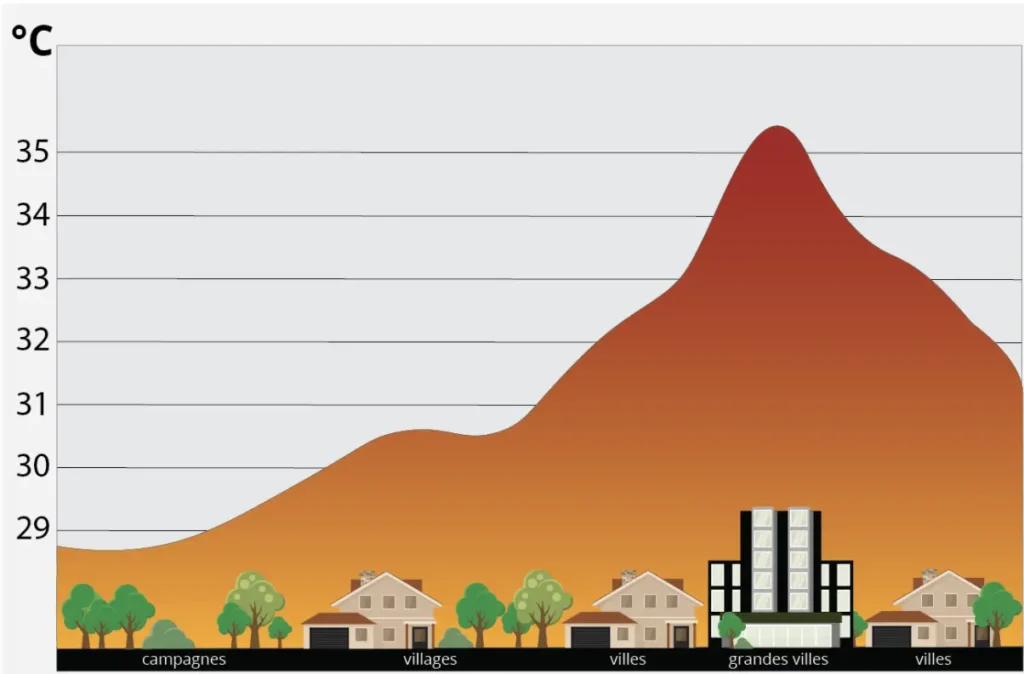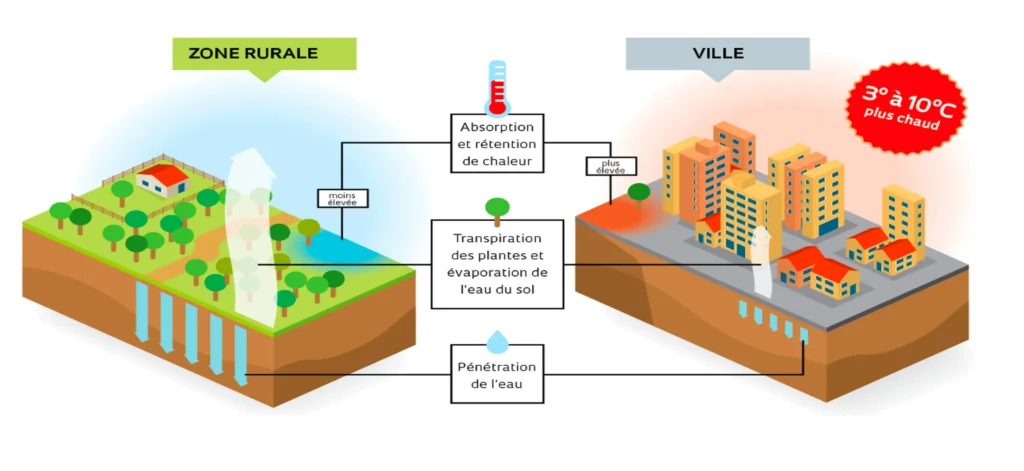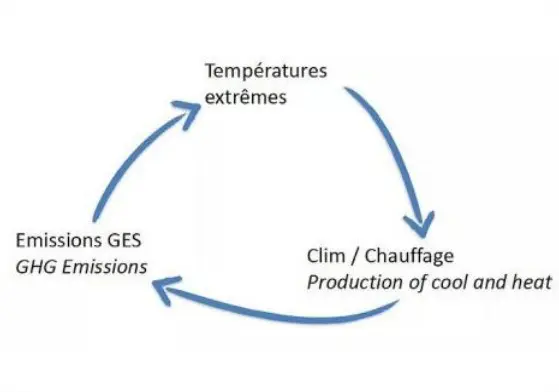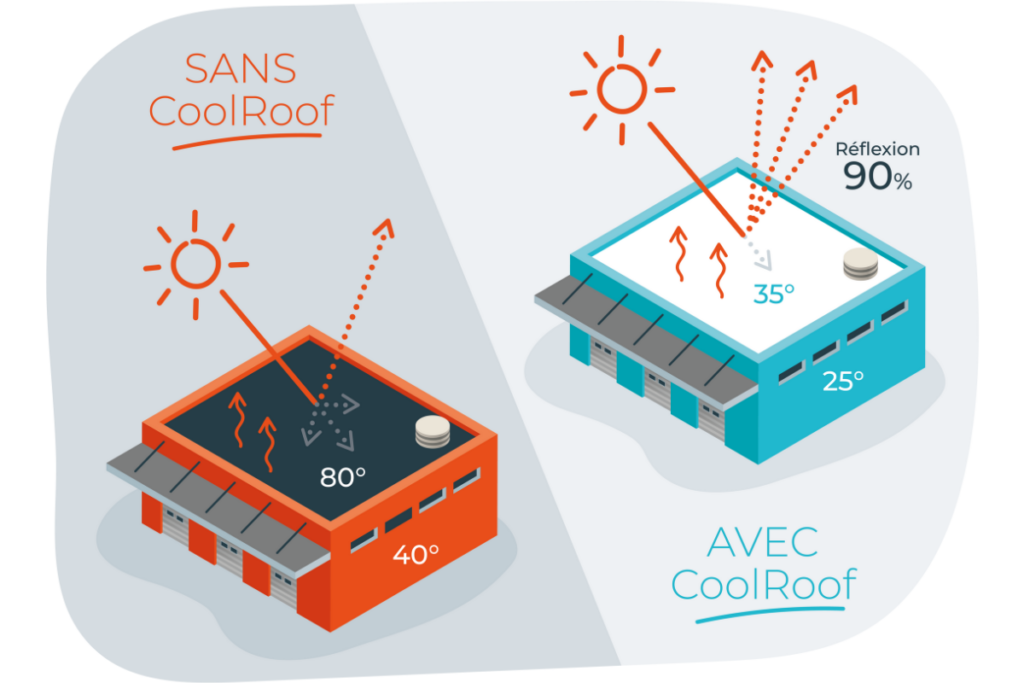An urban heat island (ICU) is a local elevation of temperatures, particularly temperatures, both day and night. This phenomenon is particularly observed in urban areas, in contrast to rural areas or forest nearby. To diagnose an urban heat island, we compare these temperatures to those areas of non – or minimally urbanized. You can also compare the temperatures regional averages.

These ” bubbles of heat ” are induced by the crossing of two factors :
Some of these activities are important sources and chronicles of heat. Among these are : the plants, internal combustion engines, jet engine aircraft (especially at launch), boilers (individual or collective), systems air-conditioning, hot water circulating in the sewer, heat networks old and often poorly insulated, etc
Theurbanization made the city an environment that absorbs more calories solar as would a middle – natural or cultivated. The black surfaces (tar, patios, tarmac, dark materials, and the number of buildings with glass) behave as solar collectors or greenhouses. They receive and then return to the solar radiation absorbed in the form of infrared radiation that warms the urban air. In addition, in the absence of wind, this warming will eventually reheat any urban environment.

The high temperatures also have an impact on the quality of the atmosphere, inner. It is conducive to the proliferation of dust mites, mould and bacteria. Some toxic chemicals are also released by the hot weather. And the adhesives used in the manufacture of furniture, construction materials…
In most cases, populations may not fit due to lack of resources. Heat waves are the natural disasters are the deadliest. For those who can adapt, the “solution” the most commonly used is unfortunately the air conditioning. It strengthens both the urban heat and the effects of greenhouse gas, so high temperatures, and finally, the use of air conditioning. It is a vicious circle and drama.

During episodes of intense heat, urban heat islands are suitable to the problems of thermal stress. This condition can cause discomfort, weakness, loss of or disorders of consciousness, cramps, fainting, heat stroke… It can even worsen chronic diseases such as diabetes, respiratory problems, heart disease, cerebrovascular, renal, and neurological. In extreme cases, these episodes can be fatal.
The urban heat island disrupt the ecosystems by increasing the temperature, to amend the local biodiversity in the short, medium and long term. In particular, the excessive heat alters the thermal gradients and the water between the town and the rural areas. To create an imbalance in the distribution of the humidity and heat flow.
The scientific community has observed these effects in large cities on several continents. For example, in Phoenix, increased heat affects the migratory fauna, reducing the diversity of species. In Paris, the suburban forests undergo water stress more intense. Tokyo sees a decline in populations of insect pollinators, disturbing pollination in rural areas. In Los Angeles, the changing cycles of rainfall impacts the rivers and wetlands, destabilizing aquatic habitats adjacent to.
The solution Cool Roof : A coating that is thermo-reflective, which returns 95% of the solar radiation. It blocks the heating of buildings and cities.
The principle of the cool roofing is to develop innovative coatings, both highly resistant, reflective, emissive, and respectful of the environment. Against the urban heat island and its adverse effects, Cool Roof offers the solution to cool roofing. We control the entire value chain of the cool roofing : from manufacturing to the supply and application of this resin on the roof to offer protection, thermal and mechanical properties of the entire roof. This value chain is anchored on the French territory, and in particular the department of Finistère : our solution is locally produced (certified, Made in France), from oyster shells recycled collected on the coasts of the department. Cool Roof also provides the study project, as well as the monitoring to demonstrate the effectiveness of the installation and to follow it in time.
